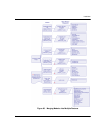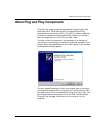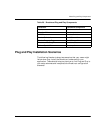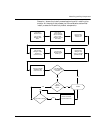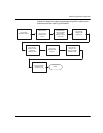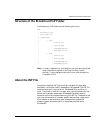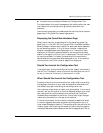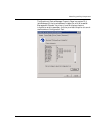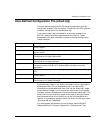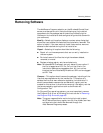
About Plug and Play Components
November 2009 397
Automatically launches the Brooktrout Configuration Tool
For details about the install package and the configuration tool, see
the installation and configuration guide that came with your
software.
Use the next paragraphs to understand the role that the co-installer
page plays in Plug and Play operating systems.
Displaying the Found New Hardware Page
When the co-installer is registered with the operating system (by
specifying it in the INF file), the Plug and Play
Found New Hardware
Wizard
process invokes the co-installer for each new device detected
by the operating system. It is up to the co-installer to determine
whether the page needs to be displayed or not. To avoid multiple
displays in a multiple hardware scenario, the co-installer stores a
cookie in the registry the first time it is displayed. The next time the
co-installer callback is invoked, the cookie value is examined to
decide whether the page should be displayed or not. If the cookie is
found and set, then the co-installer page is not displayed.
Should You Launch the Configuration Tool
If you don’t want to ship the configuration tool, specify this choice in
the INF file. The default value is to launch the configuration tool (if
no entry is found or if the entry is found and it is true).
When Should You Launch the Configuration Tool
Premature launch of the configuration tool might lead to providing
misleading information to your user and potential race conditions
that affect the proper functioning of the configuration tool.
Your customer might want to install multiple modules. If you launch
the tool from the co-installer on the first detected module, you might
face race conditions as the configuration tool and the
Found New
Hardware Wizard
compete for the driver. One or both might also get
inaccurate information for the rest of the modules.
To avoid this problem, the co-installer creates a process level event
in the non-signaled state and launches the configuration tool in a
timer mode (60 seconds: default). The configuration tool waits for the
timeout signal. While setting this mode up, the co-installer page for
the second detected module determines that the page should not be



